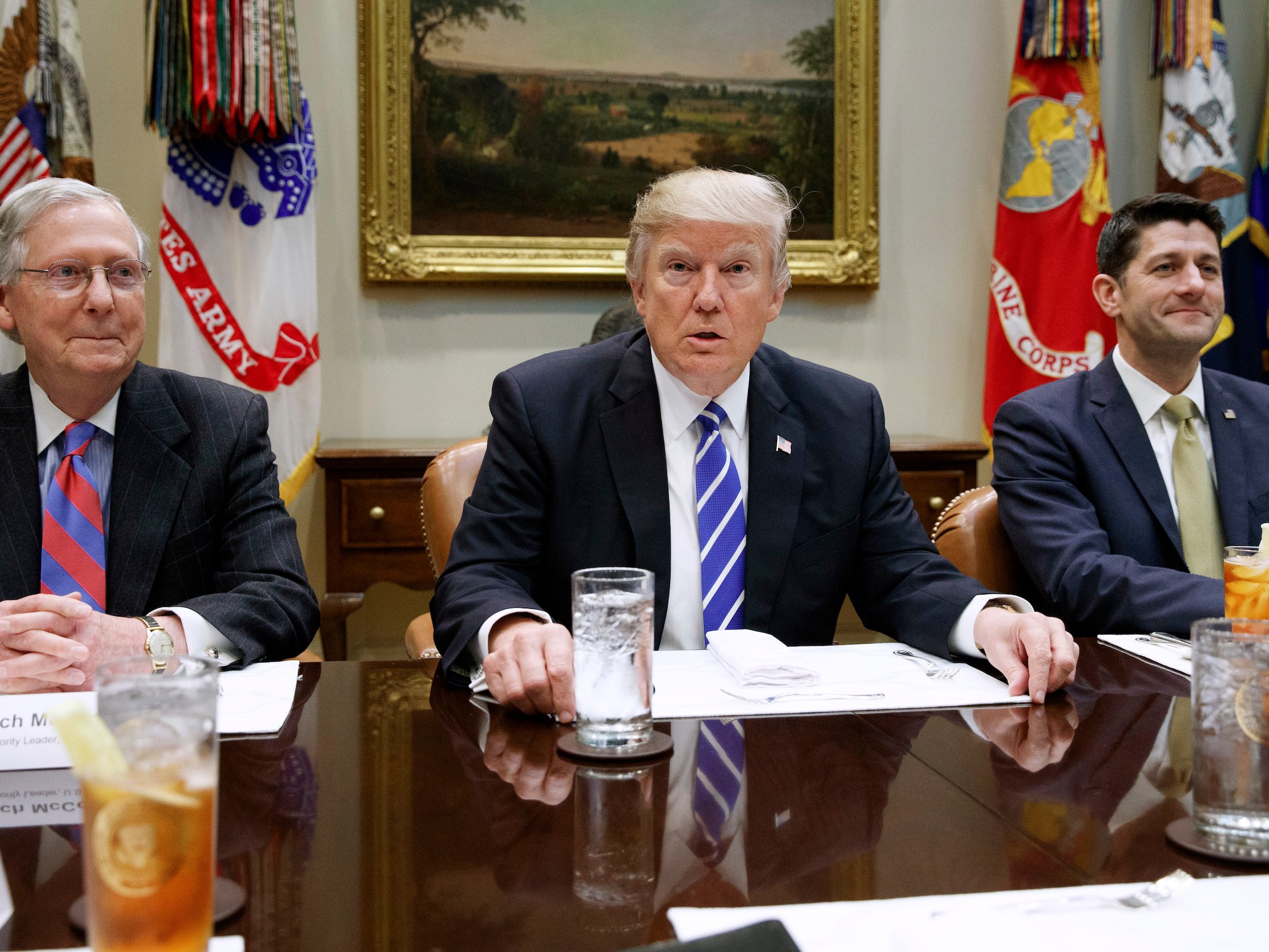
(AP Images)
From the time he came into office, President Donald Trump has been building up for the largest tax reform since the 1980s. The new tax bill will be the most important piece of domestic legislation in the next three months and, if successful, it could be a big part of his legacy.
Trump’s plan for reforming the tax code is becoming clearer.
A tax cut is the main draw, but the plan also consists of two other important parts: process simplification and closing loopholes.
Trump's plan, if implemented, could have positive effects and could help his “America First” policy in three ways.
First, Trump's plan would benefit US citizens and businesses. Trump intends to cut all corporate tax rates from 35% to 15%, which the business community has been calling for for years.
Trump also intends to lower and simplify individual income tax rates: reducing the number of tax brackets from seven to three for individuals, which would be set at 10%, 25%, and 35%. Today's rates are 10%, 15%, 25%, 28%, 33%, 35% and 39.6%.
It's estimated that cutting tax rates will boost overall corporate profits by $230 billion. A report from the National Association of Manufacturers on July 21 showed that, encouraged by the prospect of tax reform, 89.5% of survey respondents in the manufacturing sector in the second quarter of 2017 were positive about the future.
Second, Trump's plan will help to close some of the existing loopholes, which will add some tax revenue to the federal government.
The current tax code actually encourages big American companies (C-corporations like Bank of America and Exxon) to cut their taxes by turning themselves into small business entities (S-corporations with under 100 shareholders). Whilst C-corporations pay corporate income tax, S-corporations do not - their owners are taxed on their income from the business at the normal personal income tax rate instead. According to data from the Economist, currently 31 million of the US' 33 million businesses use this loophole.
If the corporate tax rate is lowered to 15% with only one bracket regardless of their legal status and size, then US companies won't have the incentive to register as S-corporations.
Third, the proposed lower corporate tax rate in Trump’s plan is globally competitive, which will encourage US multinationals to remit their earnings from abroad. Unlike most countries, America taxes companies only when they remit profits to the US at high rates. To avoid this high tax, American companies now prefer to pile as much as $2.6 trillion in cash overseas.
Though Trump's plan would have positive effects, there are several things we still don't know about it:
First, what will the final version of Trump's plan look like? The final draft would be shaped by political compromise. Opponents of Trump's plan claim it would bring disaster to the federal budget and increase the deficit. Although Trump has repeatedly claimed his plan would be revenue neutral, this remains in doubt. The US Tax Policy Center estimates Trump's tax reform plan would increase the federal debt by $7 trillion over the first decade. The Center for a Responsible Federal Budget's prediction is that the plan would cost about $5.5 trillion over the same period.
Second, how can Trump and Congressional Republicans reach a consensus on tax reform? Currently, Congress is proposing its own, competing, plan. Congress' plan is championed by Paul Ryan, the Speaker of the House, and Kevin Brady, Chair of the House Ways and Means Committee. The Ryan-Brady plan differs from Trump’s plan in four big ways: 1) it replaces the current tax on corporate income with a consumption tax; 2) it imposes a border adjustment tax, a 20% tax on net imports; 3) it replaces the existing 35% corporate income tax with a 20% tax on business cash flows (Trump's plan is for 15%); 4) it eliminates all personal exemptions, deductions, and credits, except those for mortgage interest and charitable giving (Trump's plan refers to repealing “targeted tax breaks that mainly benefit the wealthiest taxpayers”). These differences indicate different reform doctrines, which will be very hard to negotiate, putting big hurdles before the two plans.
Third, is Trump’s plan meant to be permanent, or just temporary? After years of study and debate, theories based on the permanent income model of Milton Friedman, or the life-cycle model of Franco Modigliani have led many economists to conclude that discretionary fiscal policy actions, such as temporary rebates, are not good policy tools. The tax cut will increase income. But temporary increases in income by temporary cuts will not lead to significant increases in consumption. Only when increases are longer-term, as in the case of a permanent tax cut, is consumption increased by a significant amount.
Fourth, how will it strike a balance between stimulating the economy and social fairness? It's projected that Trump's tax plan would make low-income households relatively worse-off. In October 2016, the Tax Policy Center estimated that Trump's plan would increase after-tax income for the top 1% of households by more than 14% compared to a less than 1% increase for the lowest quintile. The minimum tax that Trump intends to abolish snagged him for over $30 million in 2005. Trump's plan obviously will not help social fairness.
Fifth, how will other countries respond? Though it's hard to predict the final composition of Trump's plan, Trump's tax reforms have global impact. Even though Trump can't cut the corporate income tax rate to 15% (which would be lower than China and Singapore’s), the tax cut would attract more firms, capital, and talent to the US. In order to offset the impact of Trump's tax plan, other countries will have to cut their taxes (if they haven’t already), even leading to an international tax cut race-to-the-bottom. President Ronald Reagan's tax cuts in 1981, for example, were followed by corporate rate cuts in other countries.
Now China is feeling the tax cut pressure, and has had to take action. In his 2017 government report Premier Li Keqiang pledged tax and fee cuts of ¥1 trillion. On April 19, China's State Council executive meeting announced tax reductions of more than ¥380 billion and fee cuts of ¥200 billion this year. Since the total profit of Chinese listed companies is less than ¥2.5 trillion a year, the tax reduction increases their profits by one to two-fifths, indicating that China is using the tax cut to develop the economy.


